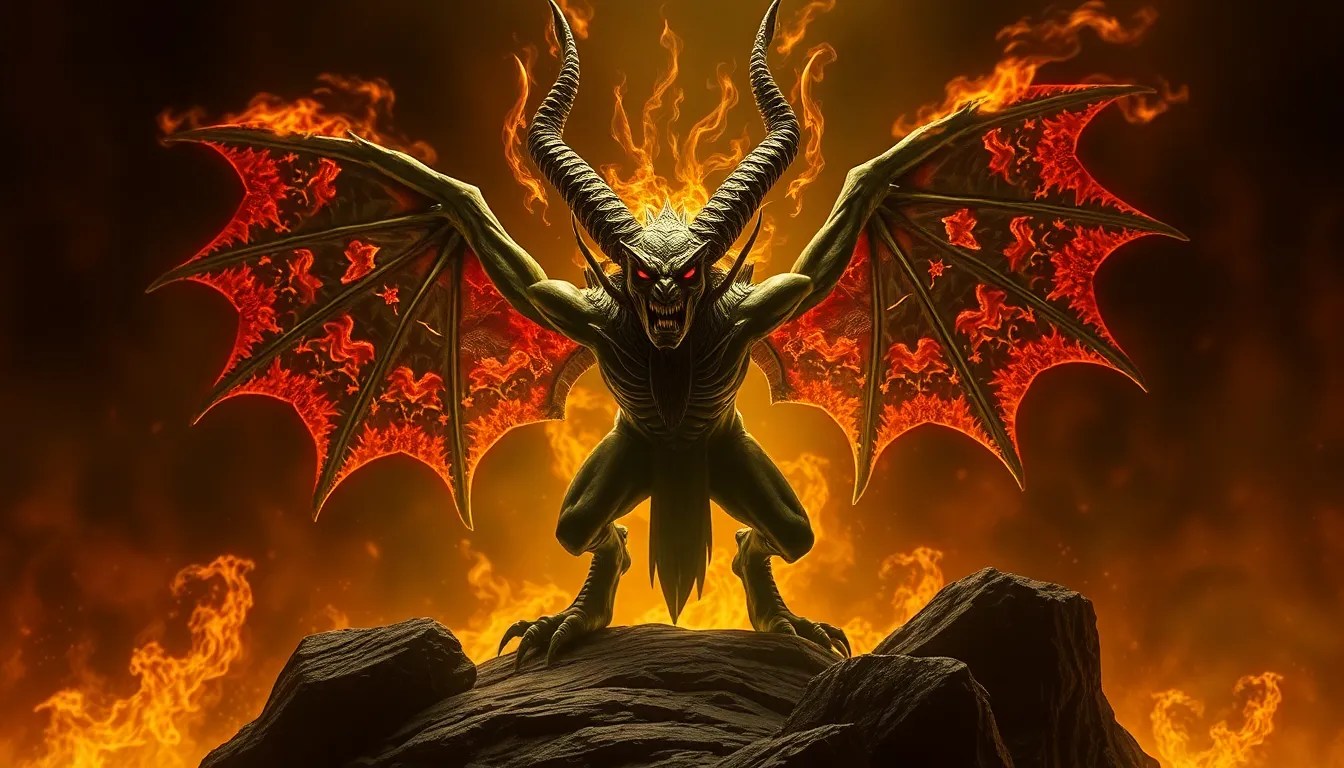The Myths of the Babylonian Demon Pazuzu: A Dual Nature
I. Introduction to Pazuzu
Pazuzu is a significant figure in Babylonian mythology, often depicted as a demon with a complex and dualistic nature. Known as the demon of the southwest wind, Pazuzu embodies both destructive and protective qualities, making him a unique character in the pantheon of Mesopotamian deities.
This article aims to explore the duality of Pazuzu’s nature, examining his historical context, iconography, and representation as both a harbinger of evil and a protector. We will delve into how these aspects of his character reflect broader themes within Babylonian mythology and culture.
II. Historical Context of Babylonian Religion
The ancient civilization of Mesopotamia, often referred to as the cradle of civilization, had a rich religious landscape. The beliefs of this society were polytheistic, worshiping a vast array of gods and goddesses, each associated with different aspects of life and nature.
- The Pantheon of Gods and Demons: The Mesopotamian pantheon included major deities such as Anu, Enlil, and Inanna, alongside numerous lesser-known demons like Pazuzu. Each entity had its own stories and attributes.
- The Role of Demons: In Babylonian society, demons were perceived as both malevolent and benevolent forces. They played a crucial role in the spiritual landscape, influencing health, fortune, and daily life.
III. The Iconography of Pazuzu
Pazuzu is often depicted in a distinctive manner in ancient artifacts. His physical appearance is a blend of human and animalistic features, which symbolize his complex nature.
- Physical Appearance: Pazuzu typically has a canine face, sharp teeth, and a body adorned with feathers. He is often shown with eagle-like wings, which emphasizes his association with the wind.
- Symbolism: The combination of these features represents both his ferocity and his ability to traverse both the earthly and spiritual realms.
- Artistic Representations: Artifacts such as amulets and wall reliefs from ancient Babylon depict Pazuzu, often in protective stances or alongside other deities, illustrating his dual role.
IV. Pazuzu as a Harbinger of Evil
While Pazuzu is revered for his protective qualities, he is also known as a destructive force in various myths.
- Destructive Myths: In some narratives, Pazuzu is associated with storms and pestilence, often unleashed to bring chaos and misfortune to humanity.
- Storm Associations: As the demon of the southwest wind, his presence heralded storms that could devastate crops and lives, showcasing his capacity for destruction.
- Significance in Myths: Pazuzu’s malevolent actions serve as cautionary tales within Babylonian mythology, illustrating the balance of good and evil in the world.
V. Pazuzu as a Protector
In contrast to his destructive portrayal, Pazuzu is also celebrated as a guardian spirit, protecting against other malevolent forces.
- Guardian Myths: Certain stories depict Pazuzu as a protector of the innocent, particularly against the demoness Lamashtu, who threatened mothers and children.
- Protective Amulets: Amulets and charms featuring Pazuzu were commonly used by the Babylonians to ward off evil spirits and misfortune, symbolizing his protective nature.
- Paradox of Duality: This duality is central to understanding Pazuzu; he is both a source of fear and a shield against greater evils, embodying the complexities of existence.
VI. Pazuzu in Literature and Popular Culture
Pazuzu’s influence extends beyond ancient texts into modern literature and media, where his character has been reinterpreted and reshaped.
- Ancient Texts: References to Pazuzu can be found in incantations and exorcism rituals, where he is invoked to either repel other demons or to show his protective side.
- Modern Interpretations: Pazuzu gained widespread recognition in popular culture, most notably in films like “The Exorcist,” where he is portrayed as a malevolent force.
- Enduring Legacy: His dual nature continues to captivate audiences, reflecting humanity’s fascination with the concepts of good and evil.
VII. Theological Interpretations of Pazuzu
Scholarly interpretations of Pazuzu’s character often focus on the implications of his duality in understanding broader themes of morality and existence.
- Scholarly Perspectives: Researchers analyze Pazuzu’s role as a symbol of the balance between chaos and order, exploring how his character reflects ancient beliefs about good and evil.
- Character Implications: The complexities of Pazuzu’s nature provide insight into Mesopotamian views on morality, illustrating that good and evil are often intertwined.
- Comparative Mythology: Comparisons with other mythological figures, such as the Greek Typhon or the Egyptian Set, reveal similar themes of duality across cultures.
VIII. Conclusion
Pazuzu’s complex nature as both a harbinger of evil and a protector encapsulates the duality present in many mythological traditions. His significance in Babylonian mythology highlights the intricate relationship between good and evil, and the human experience of navigating these forces.
The continuing fascination with Pazuzu’s myths in modern times speaks to the enduring relevance of these themes in contemporary culture. By examining Pazuzu’s duality, we can glean insights into the complexities of morality and the human condition, reminding us that light and darkness coexist in the world around us.



